| 일 | 월 | 화 | 수 | 목 | 금 | 토 |
|---|---|---|---|---|---|---|
| 1 | 2 | 3 | ||||
| 4 | 5 | 6 | 7 | 8 | 9 | 10 |
| 11 | 12 | 13 | 14 | 15 | 16 | 17 |
| 18 | 19 | 20 | 21 | 22 | 23 | 24 |
| 25 | 26 | 27 | 28 | 29 | 30 | 31 |
- basic vowels
- 한글
- koreanalphabet
- Grammar
- hangul
- 문법
- korean
- gullible
- hanguel
- Advance
- Learn
- ㅚ
- Pronounce
- Learning
- beginner
- makeasentence
- sentencestructure
- doubleconsonant
- ㅈ
- consonant
- BASIC
- LearningKorean
- 한국어
- combinedvowel
- 발음
- 받침
- lastconsonant
- learnkorean
- basicKorean
- 쌍자음
- Today
- Total
목록learnkorean (10)
Let's learn Korean
 🌿 Yes or No answers for the negative sentence
🌿 Yes or No answers for the negative sentence
'안/못'이 들어간 한국어의 '예/아니오' 대답은 영어와 다릅니다. In Korean, the Yes or No answers for the negative sentence are different from English. 영어는 자신의 상황에 따라 질문에 대한 대답이 같습니다. You answer these two different following questions with the same Yes or No sentences depends on YOUR SITUATION. Q1 : Did you have your lunch? Q2 : Didn't you have your lunch? • If you had your lunch 👉 Yes, I had my lunch already. • If you di..
 📌 나는 vs 내가
📌 나는 vs 내가
‘나’ is a pronoun that means I, my, me. ‘너’ is a pronoun that means you, your. ‘은/는’ and ‘이/가’ are postposition particles, but have different uses. 🎯 은/는 show the attached word is a TOPIC of the sentence. 🙂 나는 바빠요. (As for me, I am busy.) In this sentence, the topic of this conversation is me. We’re talking about something about me. 🎯 이/가 shows that the attached word is the SUBJECT of the sentenc..
 📌 -ㄴ/는 것 같다
📌 -ㄴ/는 것 같다
"-ㄴ/는 것 같다"는 추측이나 불확실한 단정을 나타냅니다. 문장 앞에 (확실한 건 아니지만)이 생략되어 있지요. "-ㄴ/는 것 같다" indicates a guessing or uncertain conclusion. Most of the time (Not for sure) is hidden in front of the sentence. 😀 휴대폰이 망가진 것 같다. I think my cell phone is broken 😀 그녀는 초컬릿을 먹는 것 같아. She seems to be eating chocolate. 그러나 일반적인 상황에서 자신의 경험이나 상황, 감정을 추측하는 문장은 바람직하지 않습니다. But generally, sentences that guess one's own experie..
 🌿 띄어쓰기의 중요함 - The importance of spacing words
🌿 띄어쓰기의 중요함 - The importance of spacing words
조사를 제외한 한국어의 모든 단어는 띄어 씁니다. “EVERY WORD(except postposition) have to have a space.” is the rule of Korean. 조사는 왜 제외일까요? 혼자서는 사용될 수 없는 단어이기 때문입니다. 조사는 반드시 앞말에 붙여 써야 합니다. Then why postposition particles are exclude? Because it cannot be used ALONE. It has to be attached to the before it. 🙊 아버지가방에들어가신다 🙊 아기다리고기다리던택배 🙊 속보입니다 🙊 작은형이큰집에서잤다 위의 문장은 띄어쓰기를 어떻게 하느냐에 따라 의미가 달라집니다. Sentences above have diffe..
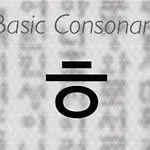 Basic consonant 14 ‘ㅎ’
Basic consonant 14 ‘ㅎ’
'ㅎ' is '히읗[hi-eut]'. It pronounces as similar as 'H' when it comes to the initial consonant. When it comes to the last consonant of the letter, it pronounces as same as 'ㄷ'
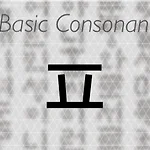 Basic consonant 13 ‘ㅍ’
Basic consonant 13 ‘ㅍ’
'ㅍ' is '피읖[pi-eup]. It pronounces as similar as [P] in front of the letter. ㅍ has stronger sound than ㅂ. When you pronounce this letter, try to breath oue stronger than ㅂ.
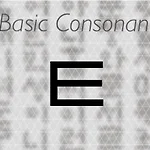 Basic consonant 12 ‘ㅌ’
Basic consonant 12 ‘ㅌ’
'ㅌ' is '티읕[ti-eut]'. It pronounces as similar as [T] in front of the letter. ㅌ has a stronger sound than ㄷ. When you pronounce this letter, try to breath out stronger than ㄷ.
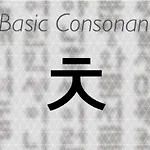 Basic consonant 10 ‘ㅊ’
Basic consonant 10 ‘ㅊ’
'ㅊ' is '치읓[chi-eut]'. It pronounces as similar as [Ch] in front of the letter. ㅊ has a stonger sound than ㅈ. When you pronounce this letter, try to breath out stronger than ㅈ.
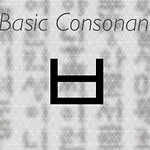 Basic consonant 07 ‘ㅂ’
Basic consonant 07 ‘ㅂ’
'ㅂ' is '비읍[bi-eup]'. It pronounces as similar as 'B'

